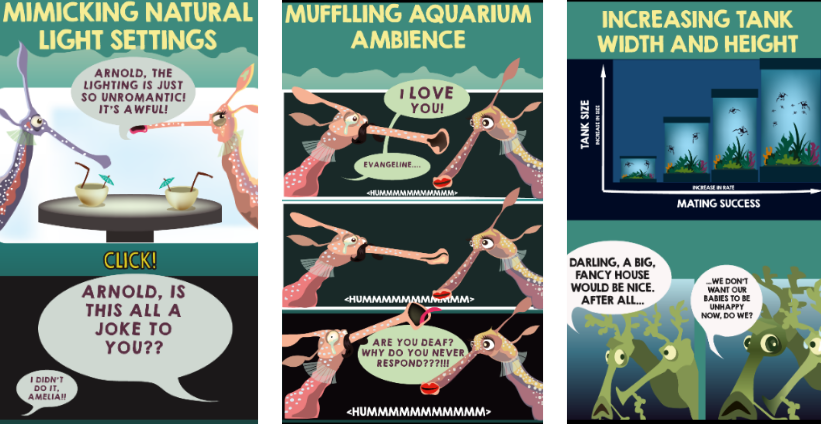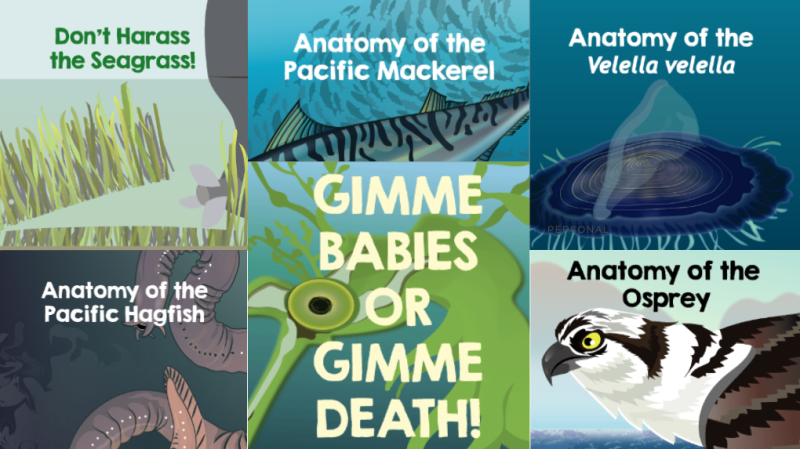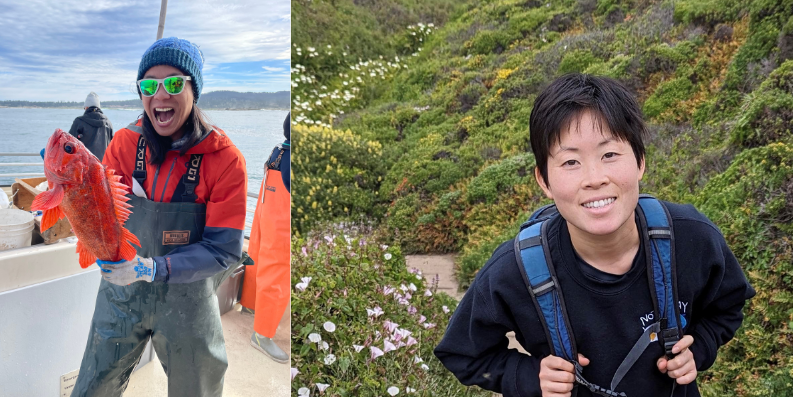Whether you’re interested in how hagfish produce sticky, thick slime to defend themselves from predators or how ospreys get into dexterous “yoga” positions to catch fish, boy do we have the comic for you.
This science cartoon will not only leave you entertained but will teach you fun facts to share at your next party.
At least, that’s the goal for Squidtoons creators Garfield Kwan and Dana Song.
Kwan is a physiologist, marine biologist and UC Davis postdoctoral researcher. In his free time, Kwan illustrates the complicated research concepts that he’s studying, turning them into comics. Back in 2013, he approached Song – who Kwan knew had a unique style and goofy spin on her own illustrations – with his idea for a cartoon series that makes science research more accessible and fun. In 2015, they published the first Squidtoon comic online, all about the anatomy of the market squid.
“Garfield’s passion for this is infectious,” said Song, who is a public health and urban studies research associate at UC San Diego. She dedicates a big chunk of her spare time to creating comics and infographics. “Putting the world into some sort of canvas is always really fun to me,” she said.

Their most recent comic brings us into the anatomy of the osprey.


